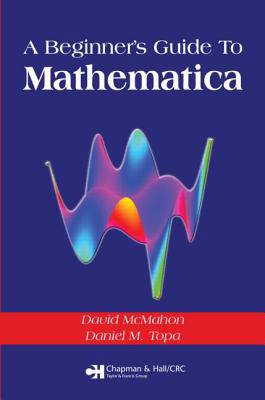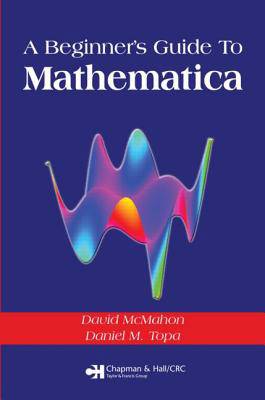
Door een staking bij bpost kan je online bestelling op dit moment iets langer onderweg zijn dan voorzien. Dringend iets nodig? Onze winkels ontvangen jou met open armen!
- Afhalen na 1 uur in een winkel met voorraad
- Gratis thuislevering in België vanaf € 30
- Ruim aanbod met 7 miljoen producten
Door een staking bij bpost kan je online bestelling op dit moment iets langer onderweg zijn dan voorzien. Dringend iets nodig? Onze winkels ontvangen jou met open armen!
- Afhalen na 1 uur in een winkel met voorraad
- Gratis thuislevering in België vanaf € 30
- Ruim aanbod met 7 miljoen producten
Zoeken
Omschrijving
Because of its large command structure and intricate syntax, Mathematica can be difficult to learn. Wolfram's Mathematica manual, while certainly comprehensive, is so large and complex that when trying to learn the software from scratch -- or find answers to specific questions -- one can be quickly overwhelmed. A Beginner's Guide to Mathematica offers a simple, step-by-step approach to help math-savvy newcomers build the skills needed to use the software in practice. Concise and easy to use, this book teaches by example and points out potential pitfalls along the way. The presentation starts with simple problems and discusses multiple solution paths, ranging from basic to elegant, to gradually introduce the Mathematica toolkit. More challenging and eventually cutting-edge problems follow. The authors place high value on notebook and file system organization, cross-platform capabilities, and data reading and writing. The text features an array of error messages you will likely encounter and clearly describes how to deal with those situations. While it is by no means exhaustive, this book offers a non-threatening introduction to Mathematica that will teach you the aspects needed for many practical applications, get you started on performing specific, relatively simple tasks, and enable you to build on this experience and move on to more real-world problems.
Specificaties
Betrokkenen
- Auteur(s):
- Uitgeverij:
Inhoud
- Aantal bladzijden:
- 736
- Taal:
- Engels
Eigenschappen
- Productcode (EAN):
- 9781584884675
- Verschijningsdatum:
- 13/01/2006
- Uitvoering:
- Paperback
- Formaat:
- Trade paperback (VS)
- Afmetingen:
- 138 mm x 209 mm
- Gewicht:
- 997 g

Alleen bij Standaard Boekhandel
+ 254 punten op je klantenkaart van Standaard Boekhandel
Beoordelingen
We publiceren alleen reviews die voldoen aan de voorwaarden voor reviews. Bekijk onze voorwaarden voor reviews.











